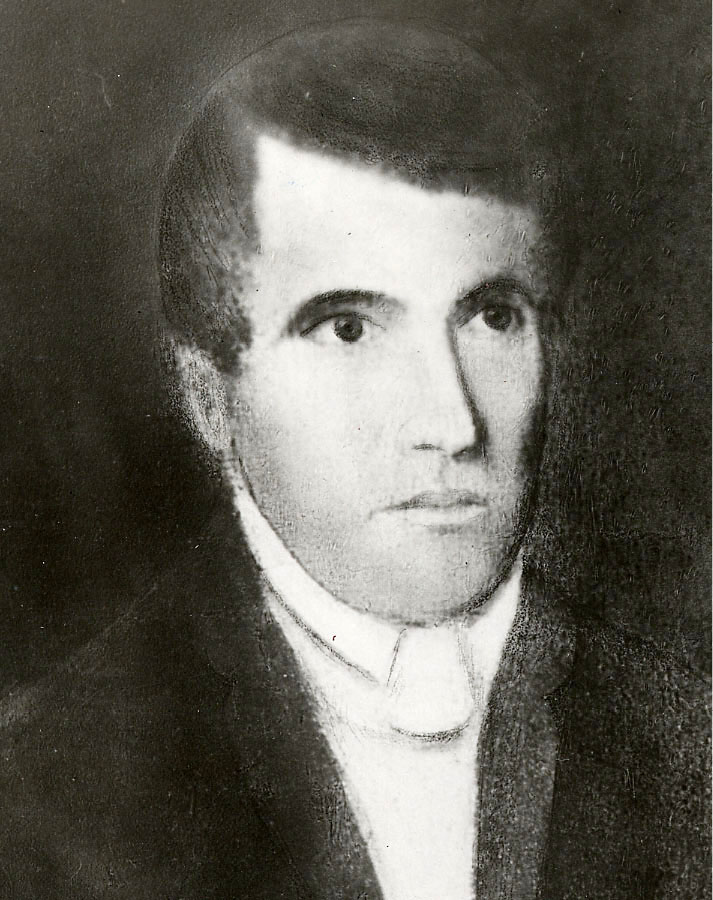John Edward Page
(1799-1867)


By Susan Easton Black
On August 18, 1833, John was baptized at Brownhelm, Ohio, by Emer Harris. The next month, he was ordained an elder by Ebenezer Page. In 1836 the Prophet Joseph Smith called John to serve a mission to Upper Canada. John objected to the call because he lacked proper clothing to endure a Canadian winter. Joseph Smith took the coat off his back and gave it to him, saying, “Go, and the Lord would bless [you] abundantly on [your] mission.”1 John was so overcome by the kindness of the Prophet Joseph that he left for Canada immediately. Before he returned to Ohio, he had baptized 305 Canadians.
When he received a second call to serve in Canada, he took his family and “all the earthly goods I possessed, which consisted of one bed and our wearing apparel of the plainest kind, to continue my mission in the same region of country as before.” This time John baptized nearly 600 Canadians.
In 1838 John led his Canadian converts to northern Missouri so they could gather with the main body of the Saints. In October 1838 John and his converts were attacked by a ruthless mob. In the attack, John’s wife and two children were killed.
On December 19, 1838, in Far West, Missouri, John was called to serve in the Quorum of the Twelve Apostles (see D&C 118:6). His first assignment as an apostle was to serve a mission to England. He never went to the British Isles. In April 1840 he was called to accompany Orson Hyde to Palestine. The Times and Seasons reported on January 15, 1841, that “Elders Orson Hyde and John E. Page are informed, that the Lord is not well pleased with them in consequence of delaying their mission, (Elder John E. Page in particular) and they are requested by the First Presidency to hasten their journey towards their destination.”2 Orson Hyde departed for Europe without John. In April 1842 John said of his failure to accompany Orson to Palestine, “If I have erred, I still have the truth which is this church and its doctrines. Where I have erred, I hope to find mercy, where I have done right I hope to be justified.”3
In December 1844 he “assur[ed] the saints that he was one with them, and gave his testimony to the present organization of the church in the most solemn manner.”4 By 1845 his name was not mentioned on Church records. On January 13, 1846, James J. Strang summoned members of the Quorum of the Twelve Apostles to come to Voree, Wisconsin, and “make satisfaction” for usurping power that was rightfully his. John E. Page was the only member of the Twelve to respond to the summons. On June 26, 1846, “in consequence of his murmuring disposition, and choosing to absent himself from our Councils,” and encouraging Canadian Saints to join with Strangism, John was excommunicated.5
He served as president of the Strangite twelve apostles and as the editor of the Strangite newspaper Zion’s Reveille. In 1849 he turned to James C. Brewster for religious truth. On October 19, 1849, he wrote to “all my Friends and Acquantances [to] lay aside all prejudices” and read the Olive Branch, a Brewsterite newspaper.6 His religious affiliation with the Brewsterites soon ended. By November 1862 he had joined with the Church of Christ (Hedrickites). He served as an apostle for the Hedrickites and was influential in securing the Independence, Missouri, temple lot for that religious group.
John died of asthma complications on October 14, 1867, near Sycamore, Illinois at age sixty-eight.
1. “History of John E. Page,” Millennial Star 27 (February 18, 1865), 103.
2. Times and Seasons 2 (January 15, 1841), 287.
3. John Quist, “John E. Page: An Apostle of Uncertainty,” Journal of Mormon History 12 (1985), 55–56.
4. Smith, History of the Church, 7:344.
5. HC 7:582; Quist, “John E. Page: An Apostle of Uncertainty,” 58. Ezra Taft Benson took John’s place in the Twelve.
6. Olive Branch 2 (November 1849), 79, in Quist, “John E. Page: An Apostle of Uncertainty,” 63.
Additional Resources
- Biography of John Edward Page (josephsmithpapers.org)
